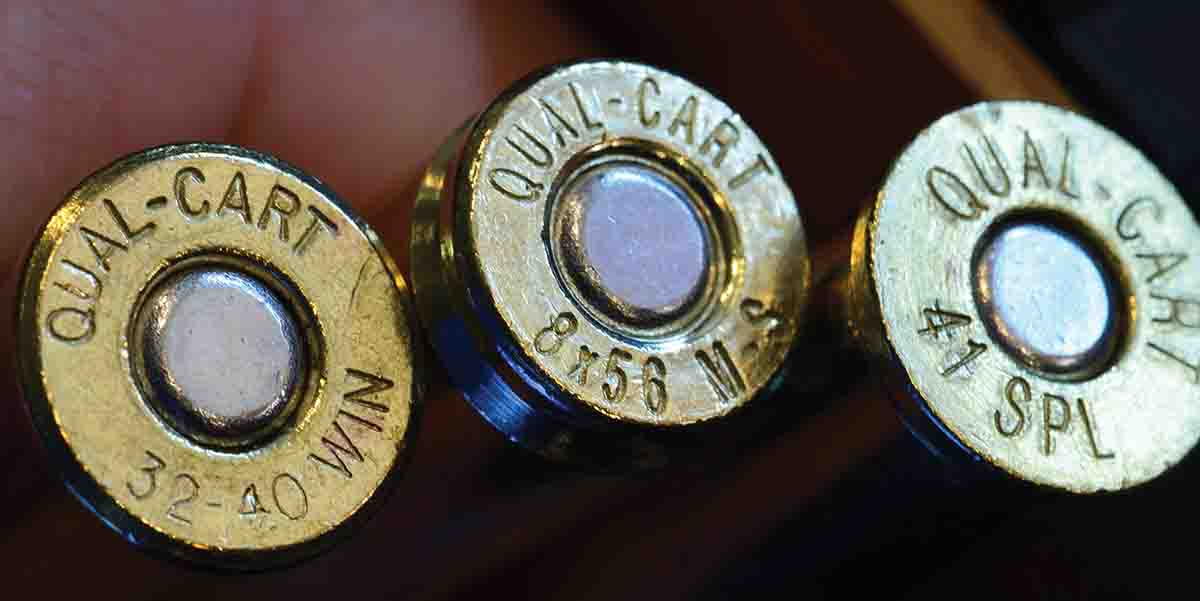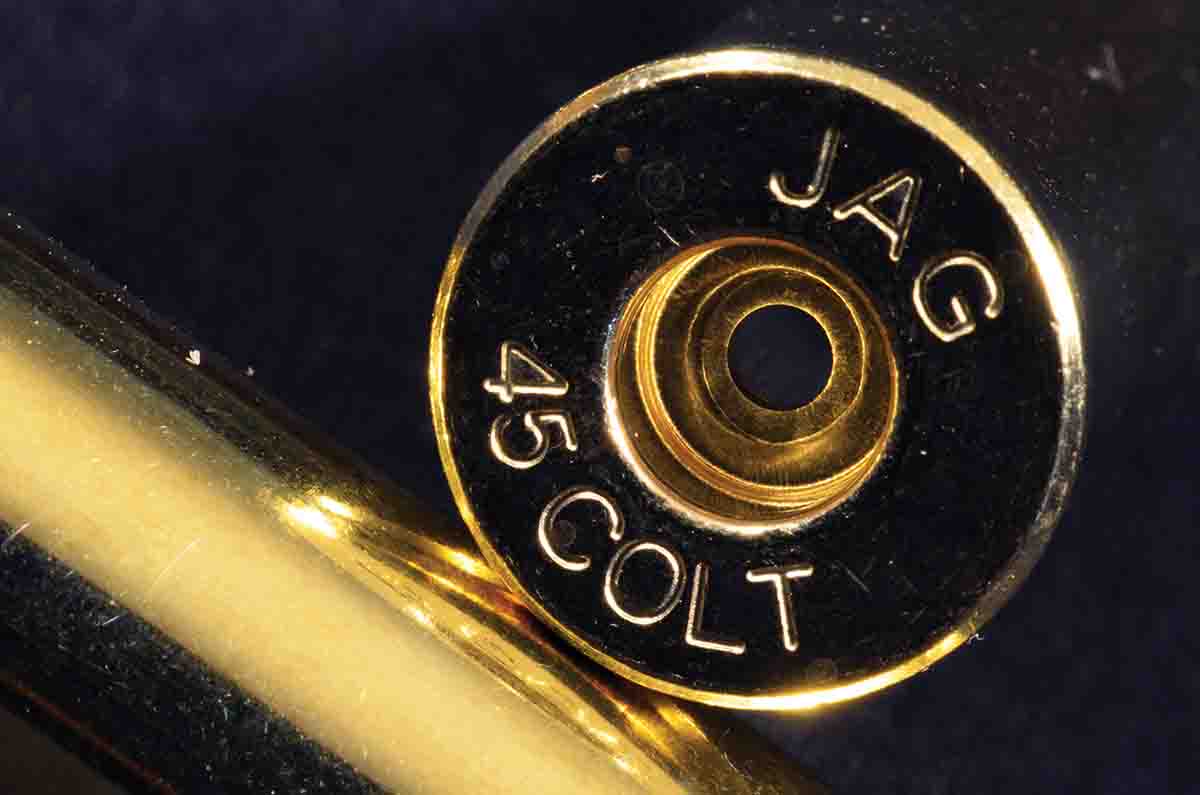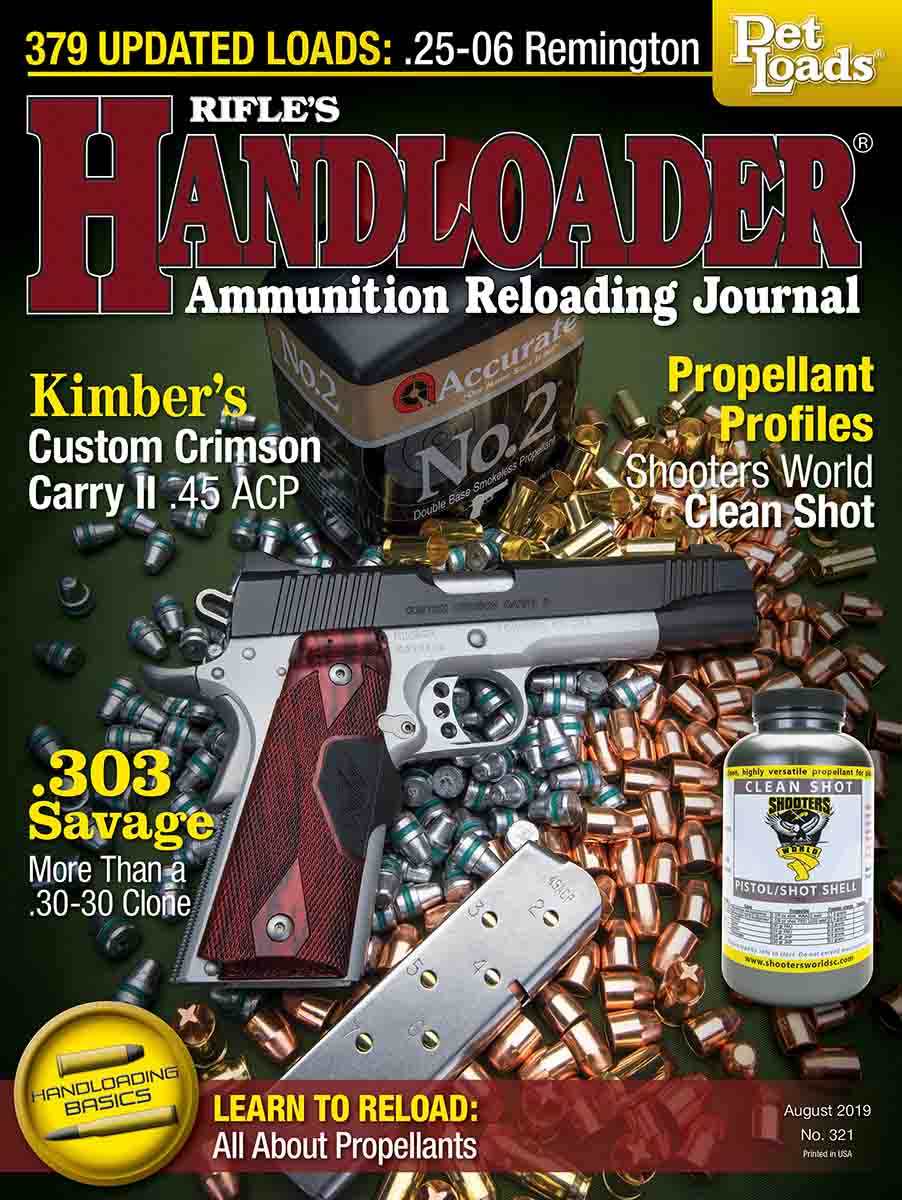In Range
The Brass Ring
column By: Terry Wieland |

Having been in this business for 35 years, I write statements like the above with both reservations and considerable trepidation. Undoubtedly, the next mail will bring a letter, possibly scrawled in pencil, or scratched out with a piece of burnt firewood on birch bark, condemning me back to four generations for ignorance of the fact that the writer has managed to reuse primers by stuffing some incendiary substance under the anvil.
Don’t laugh. I remember distinctly in the 1960s reading in one of the gun magazines a report about native hunters in the far north of Soviet Russia. They perfected a technique for reloading .22 Long Rifle cartridges. Perhaps “perfected” is too strong a word; at any rate, they had managed to make it work, two times out of three, which is better than having no ammunition at all.
I have searched in vain for that article. With the exception of my 1960s Gun World collection, which disappeared somewhere along the way, I have every gun and outdoor magazine I’ve ever purchased. Alas, it’s nowhere to be found. So this is from memory.
Apparently, the hunters would scrape the heads off “strike anywhere” matches and make this into a paste, which they would then manage, somehow, to stuff into the rim where it was not already compressed. By carefully positioning the cartridge so the striker would not hit the same place twice, they were able to get a half-dozen shots out of one case.
Powder was obtained by breaking open a shotshell, which apparently were in more plentiful supply than .22s. Projectiles were either appropriate-sized shot from the shotshells, or melted lead cast in a homemade soapstone mould. I have no recollection as to any details on either ballistic performance or accuracy, but I distinctly remember making a note to try it myself someday. Fortunately, perhaps, other events intervened and I never got around to it.
If anyone has tried this procedure with a primer, and persuaded it to go “bang,” I apologize for not being aware of it.
This gives some idea of the level of ingenuity and determination to be found among shooters who find themselves running short of ammunition. In the case of those Siberian natives, their next meal depended on being able to hunt, so their incentive to improvise was just that much greater. But I’ve known reloaders who made it a point of personal honor to keep shooting, regardless, and even a few who hung their self-esteem and standing down at the club on their ability to load, reload and reuse, anything and everything.
One trap enthusiast, in a paroxysm of determination to reload for the absolute least amount of money, could be found on his hands and knees on the trap field, gathering used wads. He would straighten them out and cram them into a shell, most of which were held closed with a tab of duct tape, since they’d been reloaded so many times. His goal was to break 25 with these monstrosities. More than once, I saw him pull out a shell that had popped open in his pocket. Periodically, he emptied the lead shot out of his pockets and reused that, too.
Before you ask, he was widowed, retired, and lived alone on a very generous government pension, so his motivation was not penury. He was simply convinced that shotshell companies charged far too much. I take the opposite view. I’m amazed they can make the products they do, and sell them at the price they ask.
But this column was supposed to be about brass and the availability thereof, not just for cartridges that are reloaded in bulk, like the 9mm Luger or .45 Auto, but also obscure rifles like the .40-65 Winchester or .40-70 Straight Sharps. Without resorting to my reference library or Google, I can think of a dozen companies, both foreign and domestic, that are providing excellent brass suitable for reloading and probably in the greatest variety of calibers in all of history.
Traditionally, two brands of brass that enjoy the best reputation are Winchester and Norma, but I’ve found that brass from Federal, Hornady, Starline and Jagemann are all excellent. My old friend Bob Hayley, who reworked existing cases into obscure calibers by means of swaging, trimming and sizing, favored Remington brass.

Really obscure calibers are made by Bertram in Australia (imported by Huntington Die Specialties), while PPU (Serbia) and Sellier & Bellot (Czech) provide many hard-to-find European rifle and pistol rounds.
Quality Cartridge produces excellent brass in a wide range of obscure calibers, both wildcat and obsolete. The only knock is that they are often out of stock, and handloaders might wait months or even years before a particular caliber becomes available.
I was prompted to write this because, in a recent article, I mentioned some problems I had with Bertram brass, splitting on first firing because it had not been annealed properly. I received a stiff letter from a Canadian handloader who took exception, insisting that Bertram brass was first-rate, and that Bruce Bertram took every pain to ensure high quality.
I wouldn’t argue with any of that. However, my correspondent had not loaded the same calibers I had. Because brass is not graded by vintage, you may well be buying some that was produced a long time ago. The issue is not age, it’s the process used to make it way back when, which may since have been improved.
While on the subject of age, old brass can deteriorate, but generally – in my experience at least – it does so not because of age but from exposure to toxic substances. Handloaders have seen old cartridges in collections where necks have split. In fact, one time I bought a full box of some ancient 6.5mm military round, and 18 of the 20 cartridges had split necks. This did not reduce collector value necessarily, but certainly ruled them out for either shooting or reloading.
Bob Hayley told me this was usually due to exposure to mercury in old primers, which causes brass to become brittle. As well, there is no telling what might have been used in primers or powder in century-old military rounds, to say nothing of the quality of materials employed during wartime.
There are other chemical considerations involving black powder that affect brass, too. In my collection of old cartridges, I have some black-powder factory loads that are pushing 150 years old, and the brass is not only discolored, it looks like it is rotting from the inside out. I have no idea what would happen if someone attempted to fire one, and I don’t intend to find out – and it’s not because of their collector value.
The old books always pointed out that, as a last resort, one could have brass made from solid stock on a lathe, with the proviso, “if you have a machinist friend…” They made it sound like a competent machinist could knock off a dozen cartridge cases during his coffee break. It’s not that simple, by a long shot. Part of the problem is the precision required and part is the strength of the brass.
I’m skeptical of cases machined from solid stock except for the lowest-pressure loads. The great advantage of drawn-brass cases, as they discovered during the early years of centerfire cartridges, is that the drawing process aligns the grain of the metal and toughens it. One reason Bob Hayley preferred using Remington .303 British cases as the basis for many of his creations was that they were high-quality brass made tougher from drawing, and his later swaging and sizing only made them harder. This could then be remedied by annealing, after which the purchaser had a supply of brass ready for repeated reloadings.
All of the above adds up to one thing: Good brass should be treasured, pampered and never taken for granted, because someday it might not be. Granted, that is.


